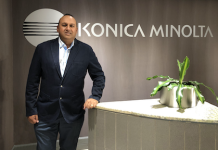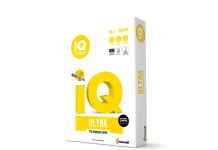Siegwerk and APK AG – a specialist in the production of high quality plastic granulate from plastic waste – want to meet the challenges of plastic recycling together and further optimise the recyclability of plastic packaging, working in a circular economy.
Printing inks play a key role in the manufacture of plastic packaging. They are not only crucial for the appearance and functionality of the packaging, but also for its recyclability. ‘Printing inks in particular, but also pigments, and the organic residues from post-consumer waste, represent a challenge when it comes to manufacturing a reusable recyclate that is as versatile as possible’, explained Klaus Wohnig, spokesman of the board of APK AG.
With Newcycling, APK has developed a solvent process that dissolves and cleans the polymer, meaning that polymers can be separated selectively in mixed plastic waste. The result is sorted granulate that is like new. ‘Printing inks are a particular challenge here, which we can only solve with an expert,’ said Wohnig. ‘We are pleased to have found this expert in Siegwerk.’
As a specialist in packaging printing inks, Siegwerk strives to constantly improve the ecological footprint of its printing inks and varnishes. ‘Sustainability means progress to us’, explained Dr. Jörg-Peter Langhammer, head of global PSR + Sustainability at Siegwerk. Siegwerk is already pursuing different approaches for removing printing ink (de-inking) in various recycling processes in order to improve recycling quality. ‘To do so, we must understand the possibilities of recycling and be ready to take new approaches to increase recyclability. This makes the collaboration with APK extremely valuable to us.’
With this collaboration, both companies see the possibility to jointly meet the challenges in plastic recycling, to make plastic packaging more circular and consequently to perfect it for a sustainable future. ‘When we achieve that, people will once again discuss the positive qualities of plastic packaging, which comes off quite badly in today’s discussions about plastic packaging, unfortunately,’ concluded Wohnig.
Plastic waste is one of the major issues of our time. Almost 80 million tons of plastic waste accumulate worldwide, and currently only about 10 percent of the resources used in the production of plastics are recovered through recycling. The remaining 90 percent are incinerated, dumped or enter the environment uncontrolled.
‘We face a huge challenge here, which we need to solve in a short time,’ said Langhammer. In Europe, the recycling rate for plastic packaging was 41.9 percent in 2017 and is expected to increase to 50 percent by 2025 according to an EU resolution. ‘Plastic recycling is such a complex topic, that, in fact, it cannot be solved by one industry player or one sector of industry alone,’ added Wohnig. ‘The current discussion, also in the public, is primarily focused on the challenges of how industry can establish a sustainable circular economy for plastics in the shortest time possible.’
Polyolefins, a collective term for the kinds of plastic that include polyethylene (PE) and polypropylene (PP), are the most commonly used raw materials in the packaging sector and, due to their versatility, are used for a number of different applications, including: cling wrap, carrier bags, bottles, food packaging, etc. In view of the fact that the recycling rate for products made out of polyolefins was below 40 percent in Europe in 2017, the gap in achieving the higher 50 percent recycling rate for plastic packaging by the year 2025 is becoming more apparent. ‘This means the industry must urgently address solutions for the recycling of polyolefins,’ added Langhammer. ‘The main challenge is to manufacture recyclates to a sufficient level of quality, allowing them to be reused for the production of high quality packaging.’
SIEGWERK https://www.siegwerk.com





















